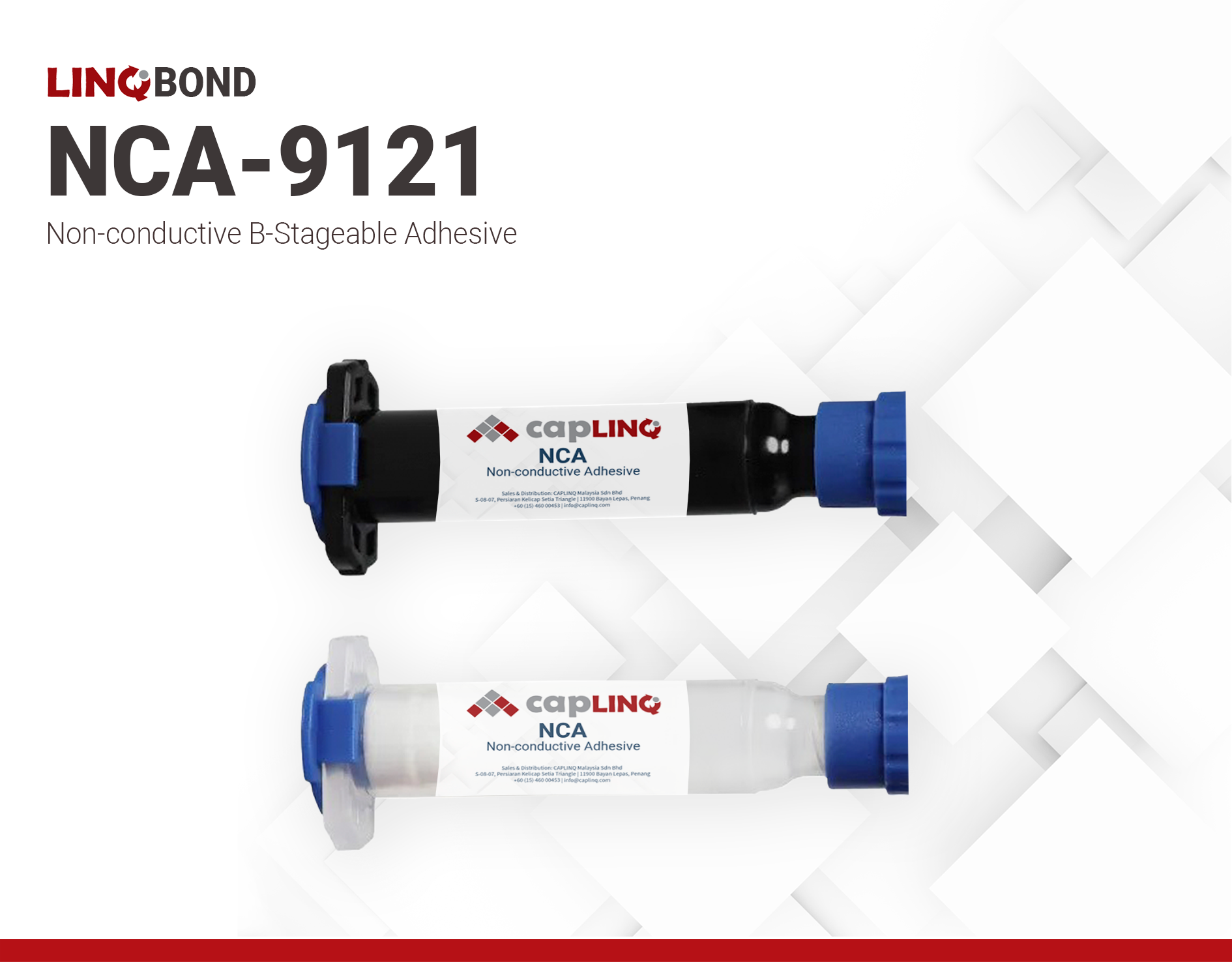LINQBOND NCA-9121 | B-Stageable Epoxy Adhesive
- Excellent adhesion to various substrates
- Non-conductive, electrically insulating formulation
- Ideal for processes requiring flexibility
Product Description
LINQBOND NCA-9121 is a one-component, B-stageable, modified epoxy adhesive engineered for demanding semiconductor and microelectronic packaging applications. It offers a unique combination of performance and processing benefits. LINQBOND NCA-9121 is available in two colors: white and black.
Recommended Curing Conditions
- B-Stage Cure: Ramp from room temperature to 110℃ in 30mins + soak for 30mins @ 110 °C.
- Final Cure: Ramp from room temperature to 185℃ in 30mins + soak for 90mins @ 185 °C.
Product Key Features
- Optimized for backside wafer applications
- B-stageable — enables tack-free handling after oven pre-cure, facilitating automated or manual die placement.
- Excellent adhesion — forms strong bonds to a wide range of substrates, including diverse die surfaces and silver-plated leadframes.
- Compatible with stencil or screen printing and cures with placement pressure.
Key Applications
- Backside wafer applications
- High-density packaging environments requiring reliable adhesion and electrical insulation.
Technical Specifications
| General Properties | |||||
| Appearance Appearance Appearance at room temperature. | White/Black | ||||
| Work life @25°C Work life @25°C Work life is the amount of time we have to work with a material until it is no longer able to be easily worked and applied on a substrate. It is based on the change in viscosity and it can rely on the application requirements. | 24 hours | ||||
| Physical Properties | |||||
| Thixotropic index Thixotropic index Thixotropic Index is a ratio of a material s viscosity at two different speeds in Ambient temperature, generally different by a factor of ten. A thixotropic material s viscosity will decrease as agitation or pressure is increased. It indicates the capability of a material to hold its shape. Mayonnaise is a great example of this. It holds its shape very well, but when a shear stress is applied, the material easily spreads. It helps in choosing a material in accordance to the application, dispense method and viscosity of a material. | 1.2 | ||||
| Viscosity Viscosity Viscosity is a measurement of a fluid’s resistance to flow. Viscosity is commonly measured in centiPoise (cP). One cP is defined as the viscosity of water and all other viscosities are derived from this base. MPa is another common unit with a 1:1 conversion to cP. A product like honey would have a much higher viscosity -around 10,000 cPs- compared to water. As a result, honey would flow much slower out of a tipped glass than water would. The viscosity of a material can be decreased with an increase in temperature in order to better suit an application | 31,000 mPa.s | ||||
| Mechanical Properties | |||||
| |||||
Additional Information
Directions for Use
Allow the product and container to reach room temperature before use. After removing from the refrigerator.
Set the syringes to stand vertically while thawing. Any moisture that collects on the thawed container should be removed.
To prevent contamination of unused product, do not return any material to its original container.
DO NOT re-freeze. Once thawed to 25°C, the adhesive should not be re-frozen.
Wear appropriate protective equipment and minimize direct contact with the human body. Refer to the Material Safety Data Sheet (SDS) before use.






